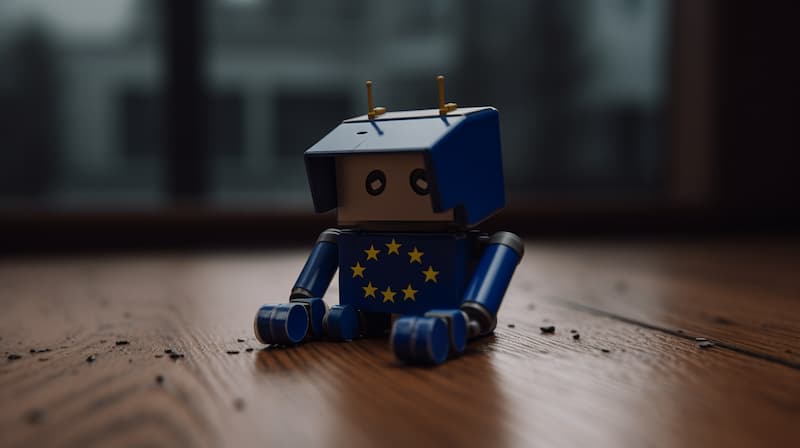In an increasingly digitized world, artificial intelligence (AI) has become the driving force behind many modern innovations, transforming the way we work, learn, and interact. However, with this technological evolution comes a new set of challenges, prompting authorities worldwide to fast-track regulations for AI. This is particularly true for the European Union, where AI legislation recently reached a significant milestone. The proposed AI Act is not merely another piece of legislation; it symbolizes the EU's proactive stance in ensuring that this emerging technology aligns with societal values, safety standards, and fundamental rights.
It was a significant Thursday when a European Parliament committee decided to bolster the proposed AI Act, marking a key step in Brussels' years-long endeavor to establish guidelines for AI. The urgency of this legislative work has been underscored by the rapid strides in AI technology, epitomized by chatbots such as ChatGPT, which demonstrate both the potential benefits and risks associated with AI.
AI Act: A Risk Management System for AI
The AI Act, first proposed in 2021, is set to regulate any product or service that employs an AI system. It seeks to categorize AI systems based on four risk levels, ranging from minimal to unacceptable. The higher the risk, the stricter the requirements, emphasizing transparency and accuracy in data usage. In essence, this legislation is akin to a risk management system for AI. Consider the words of Johann Laux, an expert at the Oxford Internet Institute, who emphasizes this very point.
The primary objective of the EU is to mitigate potential AI threats to health and safety while safeguarding fundamental rights and values. To illustrate, certain AI applications are explicitly prohibited, such as “social scoring” systems that judge individuals based on their behavior. The Act also forbids AI that manipulates vulnerable groups, including children, or employs subliminal tactics leading to potential harm.
AI Risks: From Predictive Policing to Remote Facial Recognition
In a move to strengthen the initial proposal, lawmakers voted to prohibit predictive policing tools, which analyze data to predict crime locations and potential perpetrators. Moreover, the legislation proposes an expanded ban on remote facial recognition, barring a few exceptions for law enforcement, such as preventing specific terrorist threats. This technology scans individuals in public and utilizes AI to match their faces against a database.
The objective, as expressed by Brando Benifei, the Italian lawmaker leading the European Parliament's AI initiatives, is "to avoid a controlled society based on AI." This reflects a shared concern that these technologies, while beneficial, could also be detrimental, with the associated risks deemed too high.
ChatGPT: A Case Study in General Purpose AI
Interestingly, the original proposal, spanning 108 pages, hardly mentioned chatbots, requiring only that they be labelled so users are aware they're interacting with a machine. However, subsequent negotiations led to the inclusion of general-purpose AI, such as ChatGPT, under some of the same requirements as high-risk systems.
A noteworthy amendment requires comprehensive documentation of any copyrighted material used to train AI systems in generating human-like text, images, video, or music. This provision would allow content creators to ascertain if their work, such as blog posts, digital books, scientific articles, or songs, has been used to train algorithms like ChatGPT. It provides an avenue for authors to claim redress if they believe their work has been copied.
Why Are the EU Rules So Significant?
While the EU isn't at the forefront of cutting-edge AI development—a role dominated by the U.S. and China—it often sets the tone with regulations that become de facto global standards. Given the EU's considerable market size, many companies opt to comply with its regulations rather than develop different products for different regions. But the EU's regulatory approach isn't just about enforcement; it's also about fostering market development by building user trust in AI applications. As Laux explains, increasing trust in AI can lead to wider usage, unlocking the economic and social potential of AI.
Consequences and the Road Ahead
Non-compliance with the AI Act could result in hefty fines, up to 30 million euros ($33 million) or 6% of a company's annual global revenue, which, for tech giants like Google and Microsoft, could amount to billions.
However, it may take years before the rules are fully enforced. The draft legislation is scheduled for a plenary session vote in mid-June, after which it will proceed to three-way negotiations between the EU's 27 member states, the Parliament, and the executive Commission. The legislation could undergo further changes during these discussions, with final approval anticipated by the end of 2023 or early 2024 at the latest. A grace period, often around two years, will likely be granted for companies and organizations to adapt to the new regulations.
The EU's AI Act represents a timely and comprehensive effort to balance the potential advantages of AI with the ethical concerns and risks associated with its implementation. By establishing a risk management system for AI, the EU aims to create an environment where AI technologies can thrive while adhering to principles of safety, transparency, and respect for fundamental rights. As AI continues to transform the world, it is vital for global authorities to stay ahead of the curve, ensuring that technological advancements do not come at the expense of societal values and well-being.
Critiques of the AI Act: A Potential Innovation Stifler?
While the EU’s AI Act is applauded for its forward-thinking approach in addressing the challenges posed by AI, it also draws criticism. Detractors argue that the regulation, with its stringent compliance requirements, could inadvertently stifle innovation, particularly in fields where AI could yield transformative benefits like medicine, education, and various forms of social service.
Hindering Progress in Medicine
AI has the potential to revolutionize healthcare, from enhancing diagnostics and treatments to improving patient care and hospital management. However, the AI Act’s rigorous regulations could impede the development of medical AI applications. For instance, AI-driven diagnostic tools, which could potentially save countless lives through early disease detection, might face hurdles in obtaining necessary approvals due to the stringent risk assessment and mitigation measures stipulated by the legislation. This could delay the deployment of such life-saving technology, possibly even leading to loss of lives that could otherwise have been saved.
Inhibiting Advances in Education
In the field of education, AI could personalize learning, enabling tailored educational experiences that cater to individual learning styles and speeds. However, the Act places AI systems used in areas like education in the high-risk category, subjecting them to tough requirements such as transparency with users and risk assessment measures. While ensuring safety and ethical usage is crucial, the bureaucratic red tape involved could slow down the pace of innovation, depriving students of beneficial educational tools that could enrich their learning experience and better prepare them for the digital future.
Impeding Social Service Improvements
AI has the potential to improve social services, such as through predictive analytics that can identify areas requiring urgent intervention or resources. However, the legislation’s ban on predictive tools might limit the usage of AI in these crucial sectors. As a result, opportunities to optimize social service delivery using AI might be lost, affecting society's most vulnerable groups.
A Balancing Act
In conclusion, while the aim of the EU's AI Act to protect society from the risks of AI is commendable, it is crucial to strike a balance between regulation and innovation. Over-regulation could inadvertently stifle progress in sectors where AI holds great promise. As the AI landscape continues to evolve, regulatory frameworks must remain flexible, facilitating innovation while ensuring ethical and safe AI usage. It’s a fine line to walk, but in the dance between technology and policy, both partners must move in harmony.
See Also









